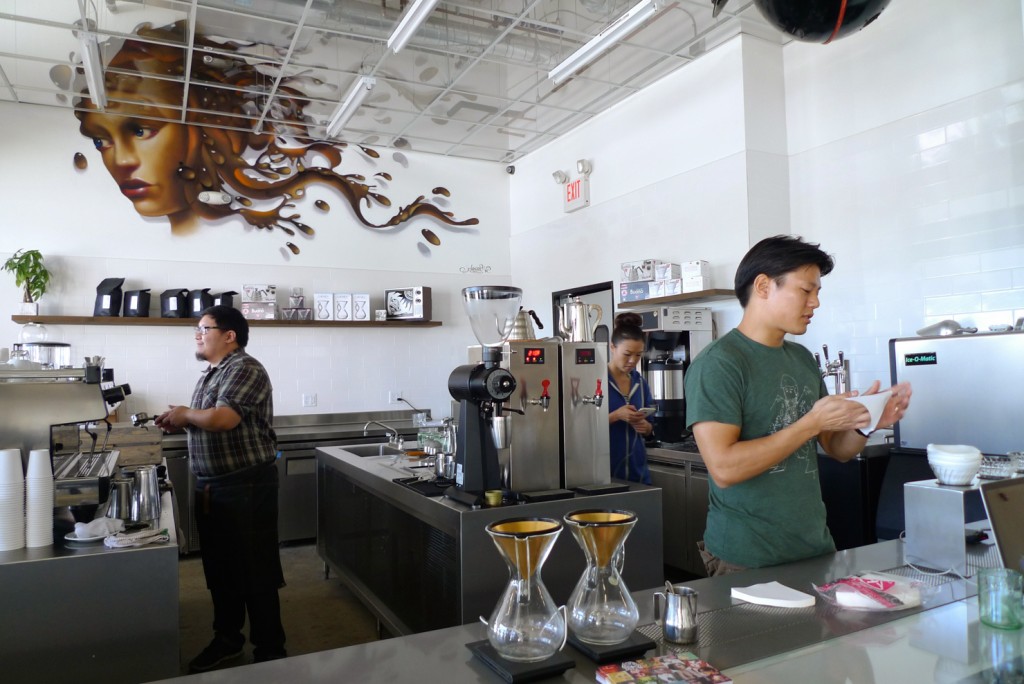In Los Angeles – a city where sleek Teslas zoom past homeless encampments along the I-10 every day – the income inequality gap between the wealthy and the poor is, well, gaping.
The Social Science Research Council recently released a study that compared life expectancy, educational achievement, and income across California’s 10 most populous metro areas, through a measure called the Human Development Index. 1
Out of all of the metro areas, LA has the widest gap in human development scores. It’s disheartening that the neighborhood index score of wealthy neighborhoods Redondo Beach, Manhattan Beach, and Hermosa Beach Cities is quadruple the score of the lowest, South Central LA and Watts.2 But it’s not too surprising.
We’re living in Tinseltown: the poor stay poor and the wealthy get wealthier. Same old story, right?
But this is where chef Roy Choi comes into the picture. You may know him for his Kogi food truck mobile empire, but he doesn’t stop with these mouthwatering-basically-LA-on-a-plate-tacos.
Choi has some real heart for the people in the city he calls his home – and he’s not one to sit around doing nothing. He recently opened up in an interview with Kollaboration on his heart and vision for Locol, Choi’s ambitious and fresh take on fast food, where “wholesomeness, deliciousness, and affordability don’t have to be mutually exclusive.”3

Mid-January of this year, Choi and restaurateur Daniel Patterson opened up restaurant Locol on the corner of East 103rd and Wilmington Avenue in the South LA neighborhood of Watts. This neighborhood sits smack dab in the middle of a food desert. Food deserts are defined as low-income tracts with limited access to grocery stores and supermarkets that sell fresh produce. It’s a sad reality that more than 1 million people across California live in these food deserts, where it’s easier to buy a can of soda and chips from the liquor store down the block than fresh produce for your family’s next meal.
On Locol’s website, there’s a blurb describing the vision behind the food the restaurant serves, and this line particularly sums up the heart of the matter well: “We believe that chefs should feed America, and not suits.”3 Choi has had enough of the current food industry: both, the massive corporation-owned fast food chains where profit’s the name of the game, and the “elitist… silver spoon” restaurants which only the wealthy can afford. He lays it out, “If we’re truly the best chefs in the world, then maybe we shouldn’t just be cooking for the most fortunate.”4
Choi describes his vision in an interview with MAD in 2013, “I’d really love to see the chefs do what I was asking at an extreme level. Go to the poorest points of their neighborhoods and think about food in those areas. Think about food in the schools, in the neighborhoods, in the prisons, and think about how to bring some more affordable food there… We have these chefs representing cities all over the world, and they need to think about exactly how powerful they are and how much people would appreciate it.”4

And because of the influence chefs have these days (think Hell’s Kitchen, Iron Chef), Choi urges chefs around the world to get up and take action – to take moral responsibility for their communities, “Even through all the haters and lovers of what the speech kicked off, I hope we don’t get lost too much in our bleeding hearts or criticisms and remember to actually do something.”5
All of his people who help keep Locol going are sourced straight from the community. By the community and for the community: not only is Locol providing healthful, delicious, and affordable food options to the neighborhood of Watts, the restaurant is providing jobs and skills to the people it’s here to serve. Choi explains, “Our people, the people who work for us here, trust us, because we are constantly trying to fulfill he promises we make… They trusted us on the food… Everybody who works here is from the immediate neighborhood. And we found our people the old-fashioned way. We posted help-wanted fliers on telephone poles. Around here, word of mouth is faster than the Internet.”6
Locol has plans to expand to Oakland and the Tenderloin district of San Francisco – both home to low-income, disinvested neighborhoods. Goals for these news additions? To grow, provide as many jobs as possible, and “continue to provide skill sets so our staff can move on in a craft or career either within Locol or beyond.”6

And last but not least, we can’t talk about urban revitalization in Los Angeles without mentioning her kombucha-sippin’ alter ego – gentrification.
Merriam-Webster defines gentrification as: “the process of renewal and rebuilding accompanying the influx of middle-class or affluent people into deteriorating areas that often displaces poorer residents.”
Or if you prefer a more reputable source, here’s a definition from Urban Dictionary: “When a bunch of white people move to the ghetto and open up a bunch of cup cake shops.”
So will Locol cause gentrification in Watts? With the historical rate of governmental disinvestment and neglect of the Watts community, most likely it won’t.
Choi gets straight to the nitty gritty on what really matters.
“Gentrification? Let’s talk about that when people actually start to invest heavily. Gentrification is not the worst thing. The worst thing is the current state of no jobs, lack of funding, educational budget cuts, racial profiling, infiltration of fast food,” says Choi. “Gentrification ain’t so bad compared to neglect.” 6
![]()
Cover photo by Wonho Frank Lee/Eater
References:
- http://www.measureofamerica.org/california2014-15/
- http://la.curbed.com/2014/12/11/10012448/los-angeles-is-the-most-unequal-place-in-california
- www.welocol.com
- http://themadfeed.tumblr.com/post/62153445107
- http://ridingshotgunla.com/2013/09/26/l-a-son/
- Personal interview via e-mail with Roy Choi. March 29, 2016.








